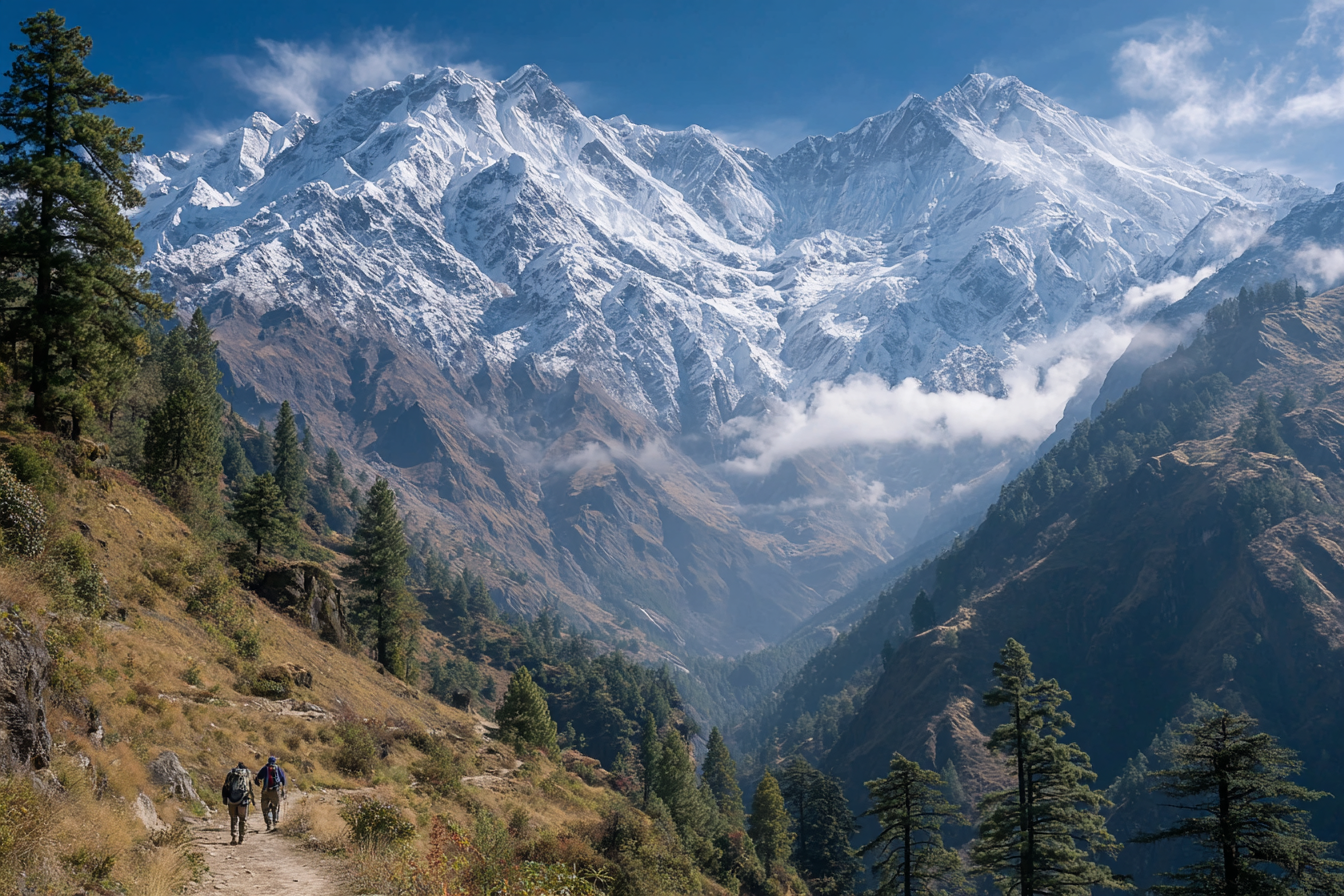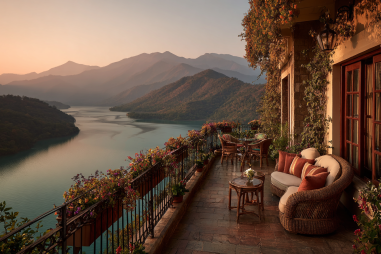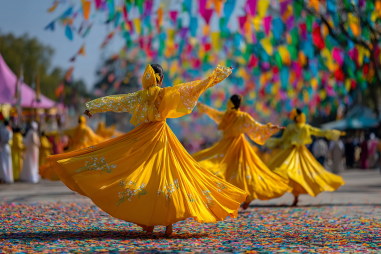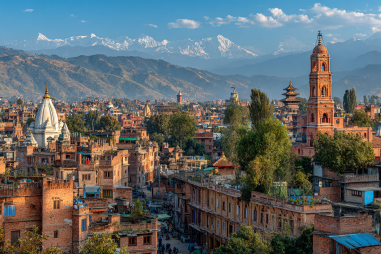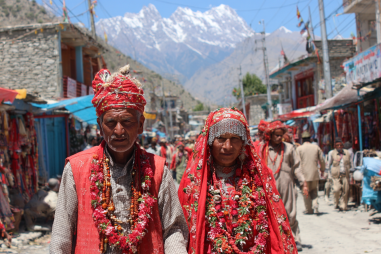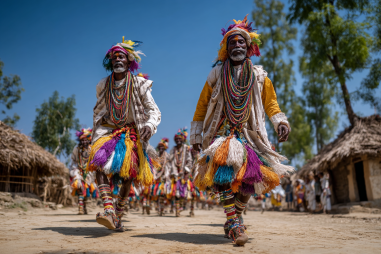Lukla is known as the gateway to some of Nepal’s most thrilling trekking trails, perched at an elevation of about 2,860 meters in the Himalayas. For adventure seekers aiming to explore the breathtaking landscapes of the Everest region and beyond, starting from Lukla offers direct access to routes filled with natural beauty, culture, and unforgettable experiences. Whether you’re aiming to challenge yourself on the Everest Base Camp trail or opt for the stunning Gokyo Lakes trek, understanding the routes from Lukla, their demands, and what to expect will help you prepare for a safe and rewarding journey.
Overview of Main Trekking Routes from Lukla
Several notable trekking routes commence from Lukla, each catering to different levels of adventure seekers and offering unique landscapes and cultural encounters.
Everest Base Camp Trek
This is the most iconic trek beginning at Lukla, highly popular among trekkers aiming to witness the mighty Mount Everest up close. The route takes you through Sherpa villages, Buddhist monasteries, and offers spectacular views of towering peaks like Lhotse and Ama Dablam before reaching the base camp itself.
Gokyo Lakes Trek
For those fascinated by glacial lakes and panoramic summits, the Gokyo Lakes trek is a fantastic alternative or extension to the Everest Base Camp trek. This route leads to a series of stunning turquoise lakes and includes climbing Gokyo Ri for one of the best panoramic views of Everest and surrounding Himalayan peaks.
Other Notable Routes
- Three Passes Trek: A challenging and extended variant that crosses three high passes—Kongma La, Cho La, and Renjo La—offering an intense high-altitude adventure.
- Chukung Valley Trek: Ideal for trekkers seeking less crowds and spectacular views focused around the Island Peak region.
- Amadablam Base Camp Trek: For mountaineers preparing for the climb, this trek offers a commanding view of the famous pyramid-shaped peak.
Difficulty and Duration of Each Trek
The difficulty and length of trekking routes from Lukla vary considerably, so choosing the right one depends on your fitness level, experience, and available time.
- Everest Base Camp Trek: Typically takes about 12-14 days, moderate to difficult. The elevation gain and lower oxygen levels make it challenging but manageable for most healthy trekkers.
- Gokyo Lakes Trek: Usually takes 10-12 days; moderately difficult due to steep climbs, especially ascending Gokyo Ri.
- Three Passes Trek: Highly demanding, lasting around 18-21 days, involves high altitude passes over 5,300 meters—recommended for experienced hikers only.
- Chukung Valley Trek: Less crowded and typically 7-9 days, difficulty ranges from moderate to strenuous depending on route variation.
What to Pack and Prepare For
Preparation is vital when trekking from Lukla, given the diverse weather conditions and challenging terrain.
- Clothing: Layered clothing including moisture-wicking base layers, insulated mid-layers, and waterproof outer layers are essential. Warm hats, gloves, and thermal socks are also necessary for cold nights.
- Footwear: Durable trekking boots with good ankle support and tread are a must. Consider packing good quality trekking socks to prevent blisters.
- Gear: Trekking poles, a good quality backpack, headlamp or flashlight, sunglasses, and a reusable water bottle. Depending on the season, sunblock and lip balm with UV protection are crucial.
- Health & Safety: First-aid kit, altitude sickness medication, water purification tablets, and hand sanitizers are advisable.
Highlights and Must-See Sights on Each Route
Each trekking route from Lukla boasts unique highlights that capture the essence of the Himalayan adventure.
- Everest Base Camp: The iconic base camp itself, the Khumbu Glacier, Tengboche Monastery—the largest in the region—and panoramic views of Everest and surrounding peaks.
- Gokyo Lakes: The five dazzling turquoise lakes, Gokyo Ri summit for breathtaking vistas, and Ngozumpa Glacier, the longest glacier in Nepal.
- Three Passes: Traversing high mountain passes with stunning views, crossing rugged terrain, and experiencing solitude and remoteness away from popular trails.
- Chukung Valley: Close-up views of Ama Dablam, Island Peak, and the peaceful Ladakh-like landscapes dotted with wildflowers in warmer months.
Local Culture and Interaction Opportunities
Trekking from Lukla offers valuable cultural encounters with the Sherpa people who inhabit the region. Villages along the routes provide glimpses of traditional Buddhist customs, prayer wheels, monasteries, and local festivals. Many lodges and teahouses run by Sherpa families offer homely meals and stories about mountain life. Engaging respectfully with the locals enriches your trekking experience and supports the community.
Accommodation and Food Along the Trails
Accommodation from Lukla onwards is mostly in teahouses—simple guesthouses providing basic rooms and meals. Facilities have improved over the years, but expect modest comforts such as shared bathrooms and limited hot water. Food menus typically include Nepali staples like dal bhat (rice and lentils), momos (dumplings), noodles, and soups. It’s advisable to carry snacks or energy bars for longer trekking days.
Best Seasons for Trekking from Lukla
The prime trekking seasons in the Everest region starting from Lukla are spring (March to May) and autumn (late September to November). Spring offers blooming rhododendrons and pleasant temperatures, while autumn provides clear skies and excellent mountain views. Winter trekking is possible but involves cold weather and potential snow challenges. The monsoon season (June to August) is generally avoided due to heavy rainfall and slippery trails.
Safety Tips and Trekking Guidelines
Safety is essential when trekking in the high Himalayas:
- Acclimatize properly to prevent altitude sickness—ascend slowly and stay hydrated.
- Use a reliable local guide or trekking agency familiar with current trail conditions.
- Monitor weather forecasts and be prepared to modify plans if necessary.
- Respect local customs and environment—carry out all waste and avoid disturbing wildlife.
- Ensure you have the necessary permits, including the TIMS card and Sagarmatha National Park entry permit.
- Keep your travel insurance up-to-date, covering high-altitude trekking and potential helicopter evacuation if needed.
By adhering to these safety guidelines and preparing well, you can enjoy a memorable trek through some of the world’s most spectacular mountain landscapes.
Embark on Your Himalayan Adventure
Lukla truly opens the door to some of Nepal’s most celebrated trekking routes, each offering distinct adventures, cultural insights, and stunning scenery. Whether you choose the classic Everest Base Camp route or venture to the enchanting Gokyo Lakes, preparing wisely and respecting the mountains will reward you with an extraordinary experience. So pack your backpack, ready your spirit of exploration, and set off from Lukla to embrace the high Himalayan journey of a lifetime.

